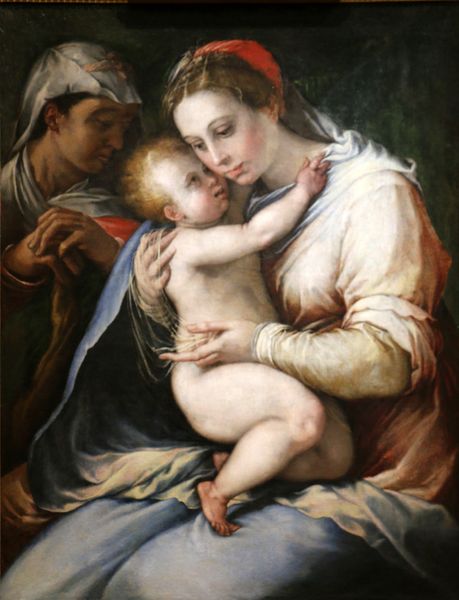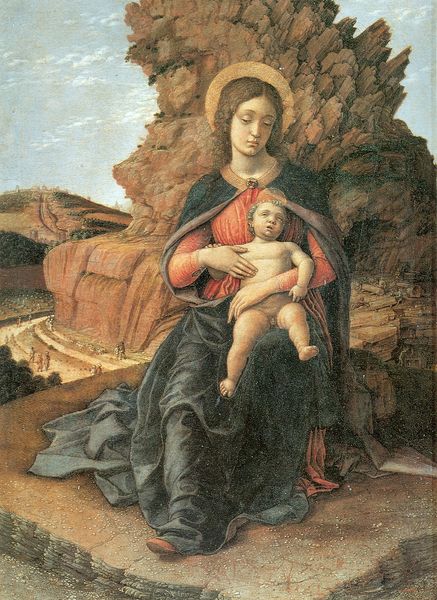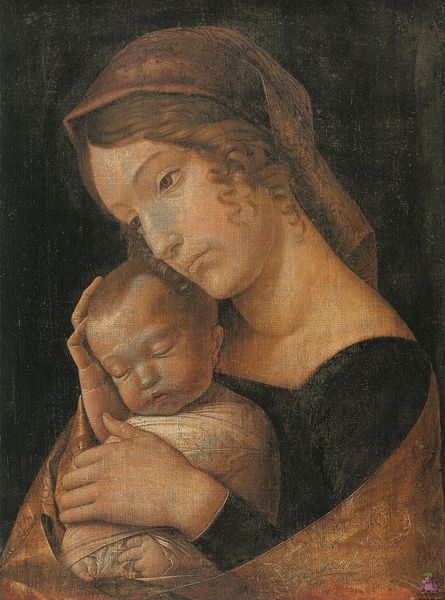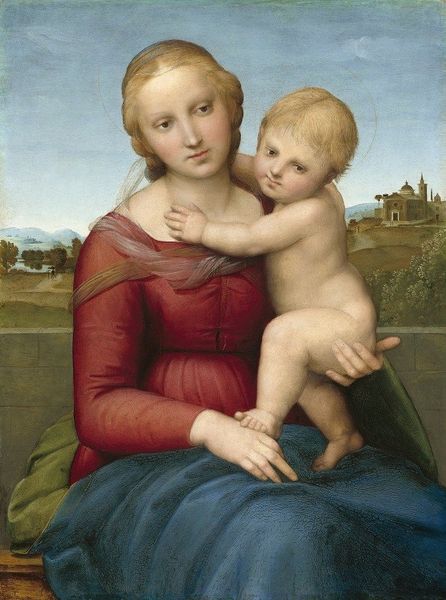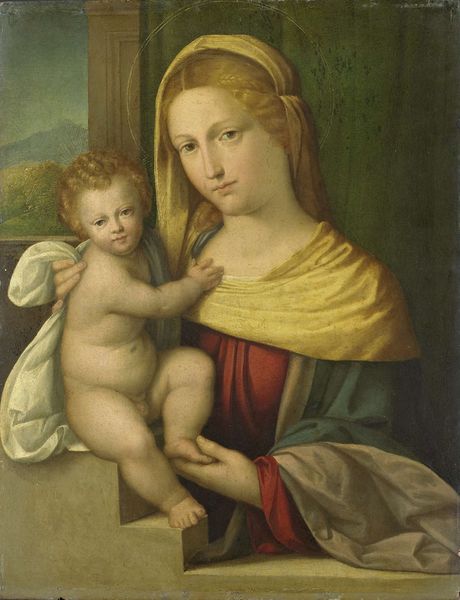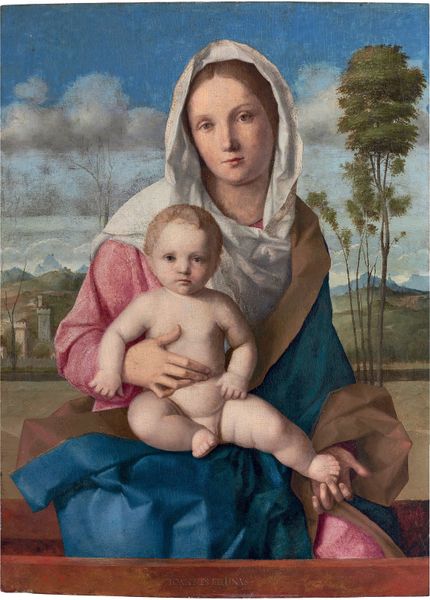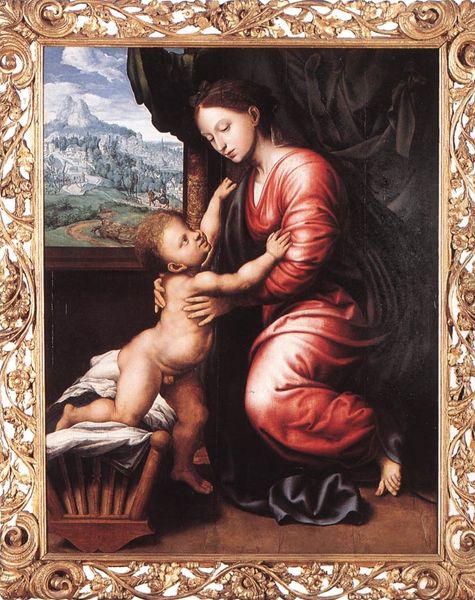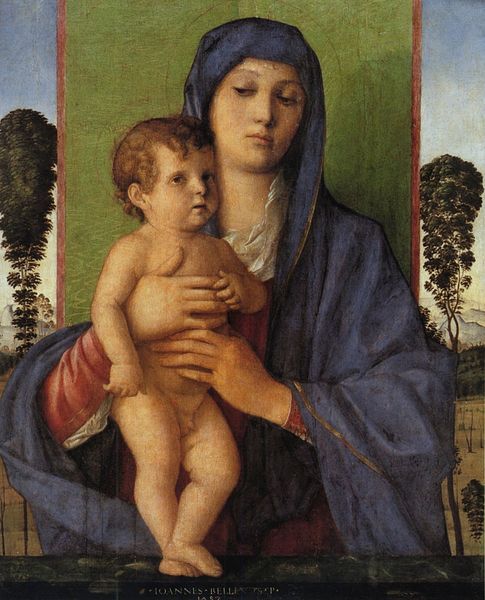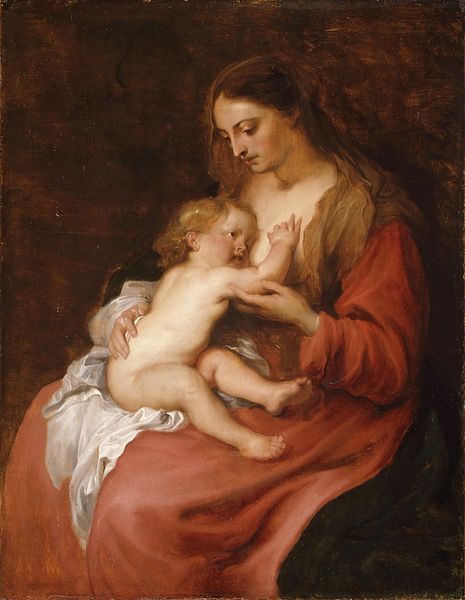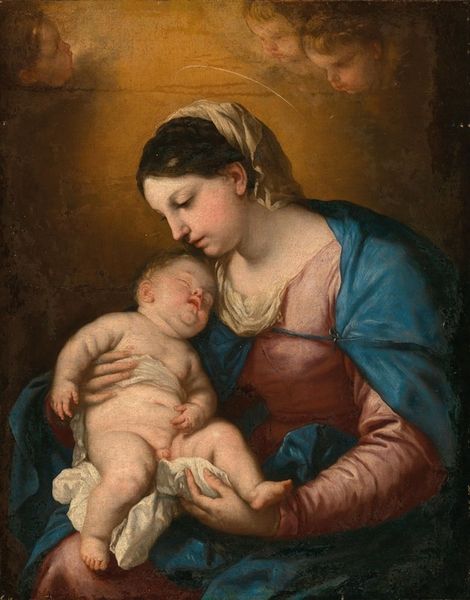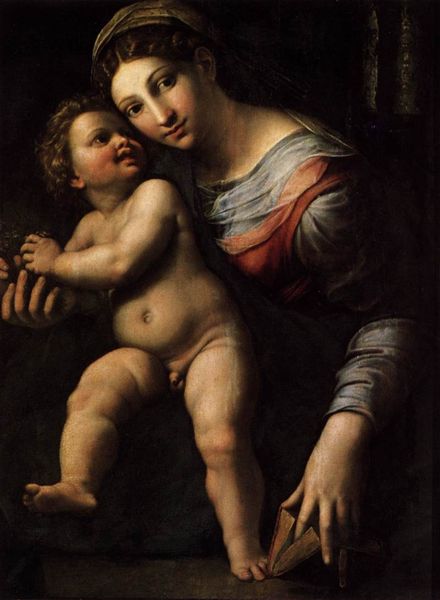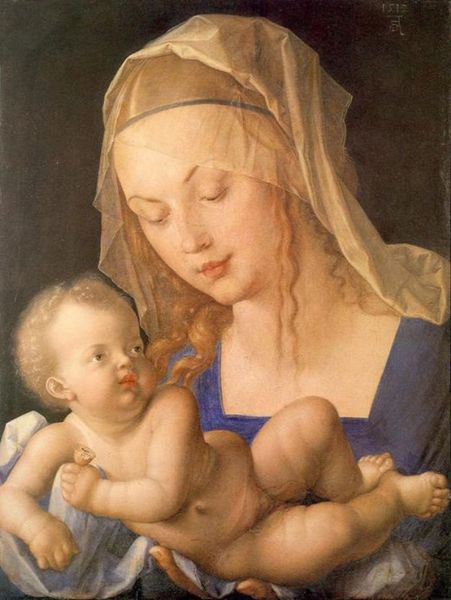
oil-paint
#
portrait
#
oil-paint
#
figuration
#
madonna
#
oil painting
#
italian-renaissance
Copyright: Public domain
Curator: Here we have an oil painting of the Virgin and Child, attributed to Annibale Carracci. It exemplifies the Italian Renaissance style, a period heavily influenced by the revival of classical art. Editor: Wow, the light! It just glows. Everything's so soft. Sort of like how sunlight filters through lace curtains on a sleepy Sunday morning. I imagine being held like that would feel pretty dreamy. Curator: The work engages with the potent imagery of the Madonna, presenting her in a tender, maternal pose. The use of oil paint here allowed for the layering of colors and the achievement of such gradations in tone. Editor: You know, I wonder what that kiddo's dreaming about. Maybe about flying or swimming in a sea of clouds. He's got such a look of pure, unadulterated bliss. It makes me feel like reaching for that blissful state in my own life. Also, notice the rose held by the baby? It seems a bit heavy-handed, as a symbol for the love of the virgin and sacrifice of Christ... Curator: Indeed. In Renaissance art, objects are frequently infused with symbolic significance. While the artist is currently unknown, they're undoubtedly conversant in such visual conventions. This presentation of the Virgin Mary also played a crucial role in the period’s social dynamics by acting as the symbol of familial ideal, especially in paintings destined for private devotion. Editor: But there’s something else here, beyond just motherly love and all the religious messaging. Something about how present each subject seems to be with themselves. A meditative reflection perhaps, that also reminds of the ephemeral, fleeting nature of human life and connection. It strikes a chord. Curator: That blend of immediate, observable affection, along with more culturally specific symbolisms is really key to how this style of Renaissance piece operated as public-facing image in a way modern portraiture never can replicate. Thank you for your thoughtful interpretation of the artist. Editor: Thanks to you! Now, where do we go from here? A quick coffee before hitting the Byzantine wing?
Comments
No comments
Be the first to comment and join the conversation on the ultimate creative platform.
